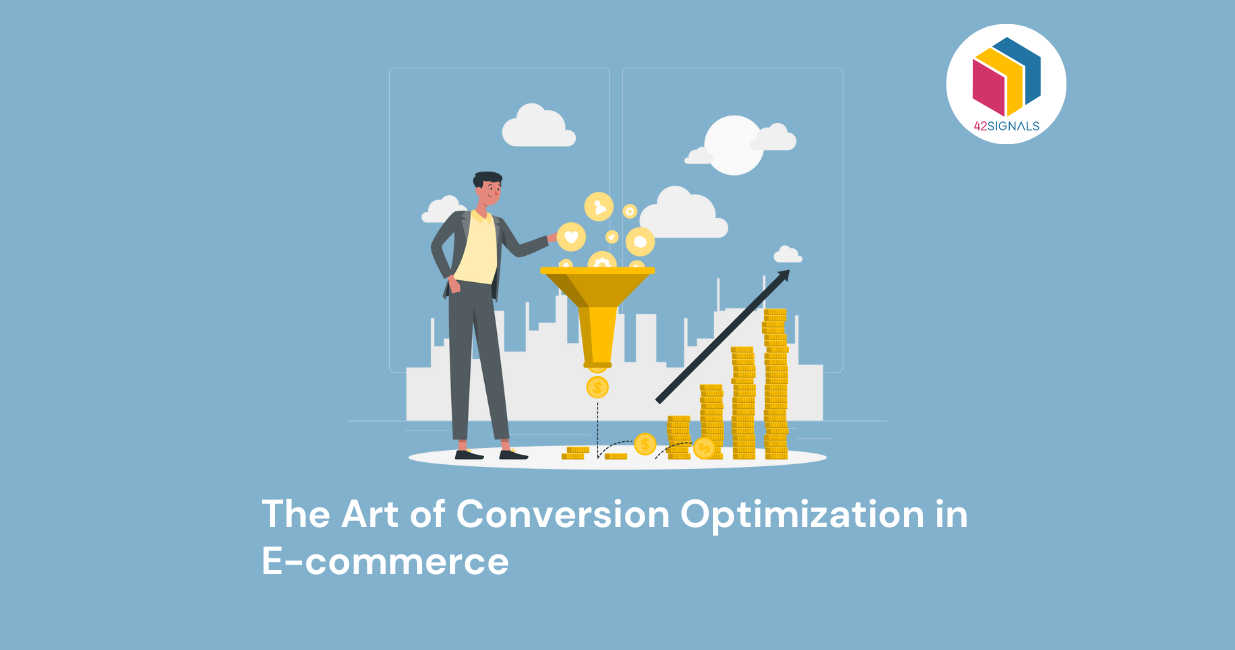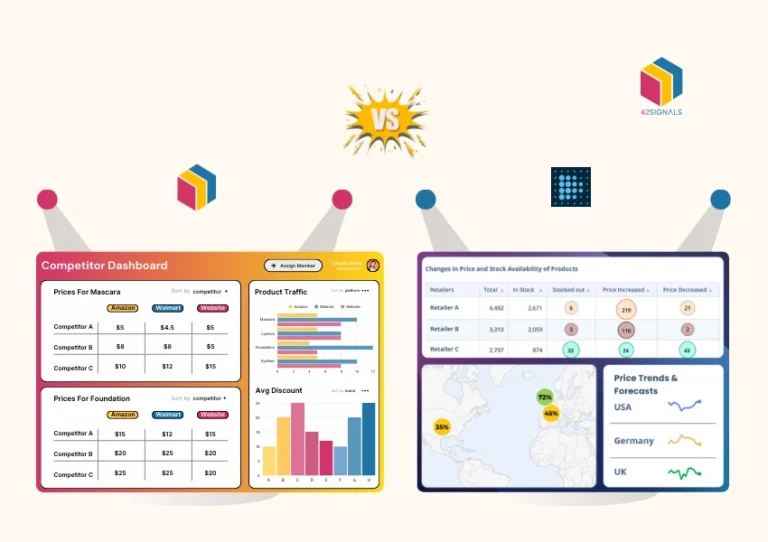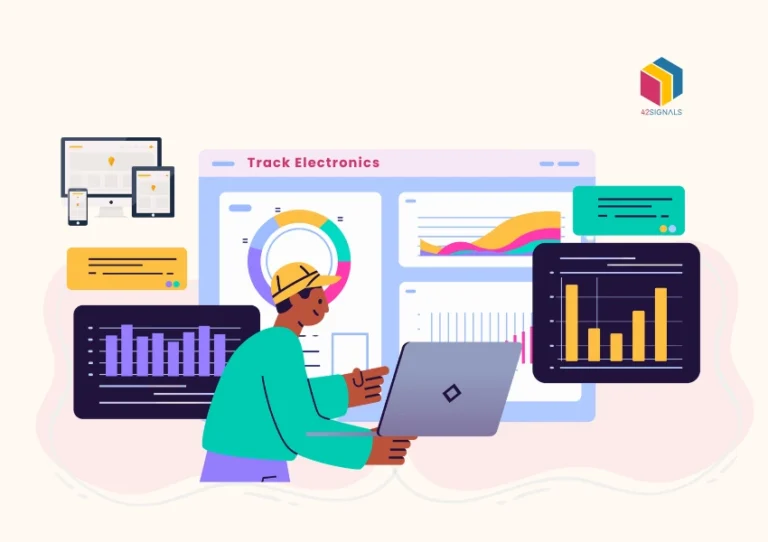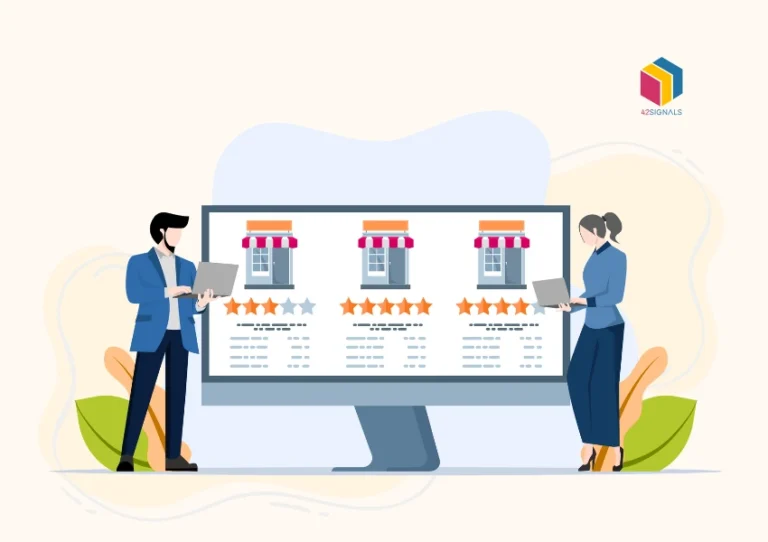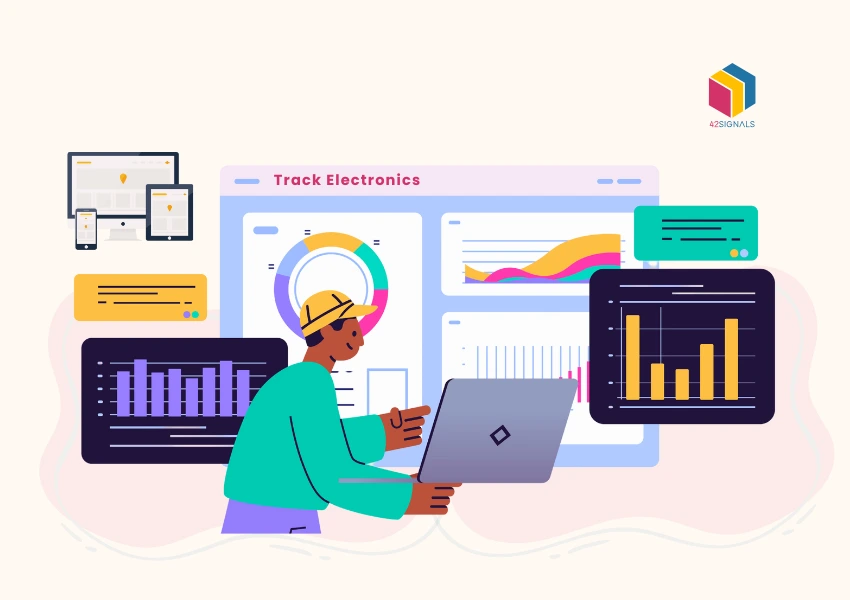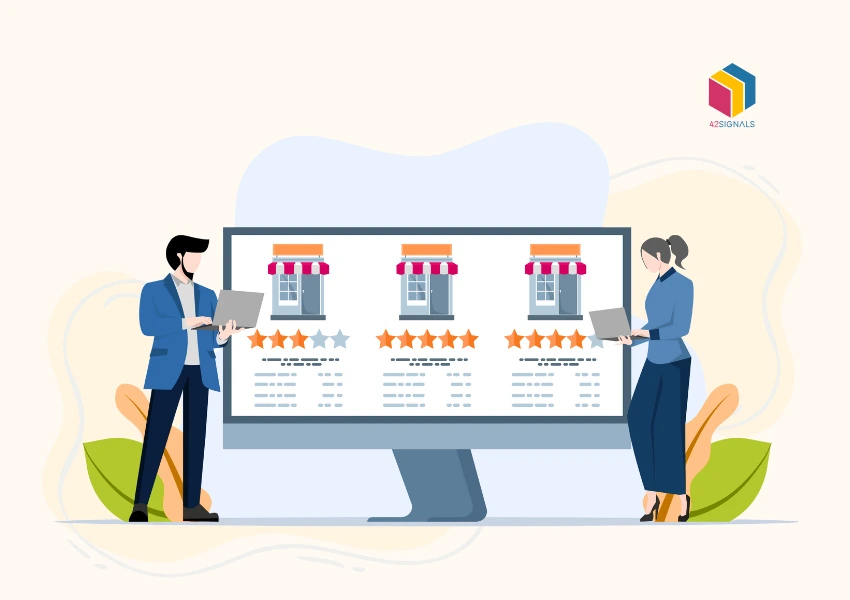Table of Contents
ToggleConsumer behavior plays a crucial role in shaping marketing campaigns. Studying how users interact with your website, what motivates them to make purchases, and their preferences can provide valuable insights. These consumer insights can then be used to create data-driven, targeted campaigns to improve conversion optimization and be tailored to meet customer needs.
As Confucius once said, “Study the past if you would define the future.” By examining historical data and current trends, you can anticipate consumers’ future actions, enabling you to design more impactful marketing initiatives.
Apurv Singh, a Marketing Consultant who has helped several brands with their storytelling to accomplish marketing goals says, “While not every visitor to your website will become a customer, failing to engage in conversion rate optimization means missing out on the chance to convert a significant number of them.”

Proven Conversion Optimization Strategy for Maximum Impact
1. Improve site speed
Why: Page load times exceeding 3 seconds lead to significant user drop-off. Slow speeds frustrate visitors, increase bounce rates, hurt SEO rankings, and directly reduce conversions.
How: Optimize image sizes (compress, use next-gen formats like WebP), leverage browser caching, minify CSS/JavaScript/HTML, use a Content Delivery Network (CDN), choose a high-performance hosting provider, reduce server response time, and eliminate render-blocking resources. Regularly test speed using tools like Google PageSpeed Insights or Lighthouse.
2. Simplify navigation
Why: Confusing navigation forces users to work harder to find products, increasing frustration and abandonment. Intuitive navigation reduces cognitive load and guides users smoothly towards purchase.
How: Implement a clear, hierarchical menu structure with logical categories and subcategories. Use descriptive labels. Include a prominent, predictive search bar with filters (e.g., price, size, color, brand). Ensure breadcrumbs are visible. Maintain consistent navigation across all pages. Test usability with real users.
3. Highlight trust signals
Why: Online shoppers need reassurance that their data and money are safe. Trust signals reduce purchase anxiety and build credibility, directly influencing the decision to buy.
How: Prominently display SSL certificate badges (padlock icon, “HTTPS”), recognized security seals (e.g., Norton, McAfee, TRUSTe), payment method logos, and clear privacy policy links. Showcase genuine customer reviews and star ratings on product pages and category listings. Feature guarantees or return policies are visible.
4. Streamline the checkout process
Why: A lengthy or complex checkout is a major cause of cart abandonment. Reducing friction at this critical stage significantly boosts completed purchases.
How: Minimize steps (ideally single-page checkout). Offer a clear “Guest Checkout” option (don’t force account creation). Pre-fill information where possible (e.g., using geolocation for country). Save shipping/billing details securely for registered users. Clearly display progress indicators and security assurances. Offer multiple shipping options clearly.
5. Utilise calls-to-action (CTAs) for conversion optimization
Why: CTAs guide users towards the next desired action (e.g., “Add to Cart,” “Buy Now,” “Sign Up”). Weak or invisible CTAs lead to indecision and lost conversions.
How: Use action-oriented, persuasive text (“Get Started,” “Claim Your Discount,” “Download Now”). Design CTAs with contrasting colors to make them visually stand out. Ensure they are large enough and well-placed (above the fold, near product info, at the end of sections). A/B test variations (color, text, size, placement).
6. Implement exit-intent popups
Why: Captures users showing clear intent to leave without converting, offering a last-chance incentive to retain them and recover potential sales.
How: Use technology that detects mouse movement towards the browser’s close button or tab switch. Offer relevant, valuable incentives: a discount code (e.g., “10% OFF Your First Order”), free shipping, a downloadable resource (guide, checklist), or a newsletter signup (offer exclusive content/deals). Keep the popup design clean, easy to dismiss, and non-intrusive.
7. Mobile optimization
Why: Mobile is often the primary browsing device. A poor mobile experience (slow load, tiny text, difficult navigation, broken elements) directly alienates a massive portion of potential customers.
How: Implement a responsive design that automatically adapts the layout and content to any screen size. Use large, tappable buttons and form fields. Simplify navigation for touch (e.g., hamburger menu). Optimize images and speed specifically for mobile networks. Test thoroughly on various devices and operating systems. Prioritize thumb-friendly design.
8. Leverage social proof
Why: People trust the opinions of others. Social proof validates your products and brand, reducing perceived risk and encouraging purchases.
How: Display user-generated content (photos/videos). Showcase testimonials and reviews prominently (dedicated page, homepage snippets, product pages). Highlight media mentions or features. Display real-time notifications (e.g., “Someone in [City] just bought this”). Feature endorsements from relevant influencers or industry experts. Showcase trust badges from well-known organizations.
9. Offer free shipping for conversion optimization
Why: High shipping costs are a top reason for cart abandonment. Free shipping is a powerful psychological incentive that increases perceived value and directly boosts conversion rates.
How: Implement site-wide free shipping if margins allow. Alternatively, set a clear minimum order value threshold (e.g., “Free Shipping on Orders Over $50”) prominently displayed throughout the site (header banner, product pages, cart page). Clearly state any geographical or product restrictions. Consider baking the average shipping cost into product prices if feasible.
10. Provide multiple payment options
Why: Customers have strong preferences for payment methods. Limiting options excludes potential buyers and adds friction at the final checkout step.
How: Offer a diverse range of secure options: Major credit/debit cards (Visa, Mastercard, Amex), PayPal, Buy Now Pay Later (BNPL) services (Klarna, Afterpay, Affirm), and digital wallets (Apple Pay, Google Pay). Clearly display accepted payment icons early in the shopping journey (e.g., footer, product page) and prominently at checkout. Ensure all methods are integrated securely and seamlessly.

Designing Effective Landing Pages to Improve Conversion Optimization
For a landing page to be effective and lead to conversions, it must follow some basic rules –
- Keep it simple and clutter-free
- Use compelling headlines and subheadings
- Feature high-quality visuals
- Employ persuasive copywriting techniques
- Create urgency through limited-time offers
- Test different layouts, colors, and fonts
Apurv adds, “Today, conversion optimization is a sophisticated fusion of skills including UI design, growth marketing, retention strategies, and copywriting. This necessitates a collaborative effort from diverse teams.”
He continues, “Integrating data insights with AI can enhance personalization, significantly boosting the conversion rates of your website or app.”
A/B Testing and Other Testing Methodologies
A/B testing, also known as split testing, involves comparing two versions of a webpage to determine which one performs better. It allows marketers to fine-tune their strategies based on empirical evidence rather than relying solely on gut feelings.
While A/B testing remains popular, there are several alternative testing methodologies worth considering, including multivariate testing, usability testing, and heat mapping. Each approach serves unique purposes and caters to distinct aspects of CRO, making them indispensable tools in every e-commerce arsenal.
Personalization Strategies to Enhance User Experience
Personalization goes beyond merely addressing customers by name; it encompasses delivering customized content, product recommendations, and promotional materials based on individual preferences, behaviors, and interactions.
Some proven personalization strategies include:
- Product suggestions based on browsing history or previous purchases
- Tailored email campaigns triggered by specific user activities
- Location-based targeting to display relevant pricing, language, currency, or shipping options
- Personalized homepages showcasing curated content based on user interests
- Real-time chatbots to assist with queries and facilitate sales
From Apurv’s experience spanning decades in the field, conversion rate optimization hinges on strategic nudges. It starts by addressing what truly influences your users’ decision-making.
Effectively handling objections, establishing social proof, and fostering trust throughout the purchase journey is crucial. The more you segment your browsing and purchase data, the more precise your predictions become. Businesses often revisit their marketing funnels when they master conversion rate optimization.
Not every advertisement on platforms like Meta or Google needs a conversion objective; once you establish successful use cases for conversion rate optimization, the focus shifts towards attracting high-quality traffic and developing a dedicated traffic-to-conversion funnel.
Case Studies & Lessons Learned in Conversion Optimization
Having worked with several brands, Apurv’s expertise in the domain has helped several businesses achieve their goals by focusing on the right activities leading to the desired outcome. Let’s look at a few case studies and initiatives that helped achieve these results.
Over the last eight years, our performance marketing ventures have generated numerous case studies emphasizing the importance of conversion rate optimization.
My advice is straightforward: don’t scatter your efforts across too many initiatives. Begin with fundamental data segmentation—traffic, traffic to token collection rate, traffic to registration rate, traffic to conversion rate, and registration to conversion rate. Monitoring these segments weekly can reveal significant opportunities for incremental sales.
After establishing these basic segments, the next level involves sophisticated RFM (Recency, Frequency, and Monetary) segmentation.
For example, an insurance firm I advised achieved an 18% conversion rate using a chatbot, surpassing results from SEO traffic (12%), direct traffic (10%), Google ads (8%), and Meta traffic (1%). Another case involved a fast fashion e-commerce site where personalized homepage banners increased conversion rates by 35 percentage points, demonstrating the power of personalized marketing.
For a direct-to-consumer brand in the food and agriculture sector, focusing on non-vegetarian consumers in a primary city proved effective. Layering digital targeting increases ad costs, but by creating a precise cohort, they established a robust funnel involving traffic, landing page views, app installs, and segmented outreach via personalized notifications and messages, significantly enhancing sales.
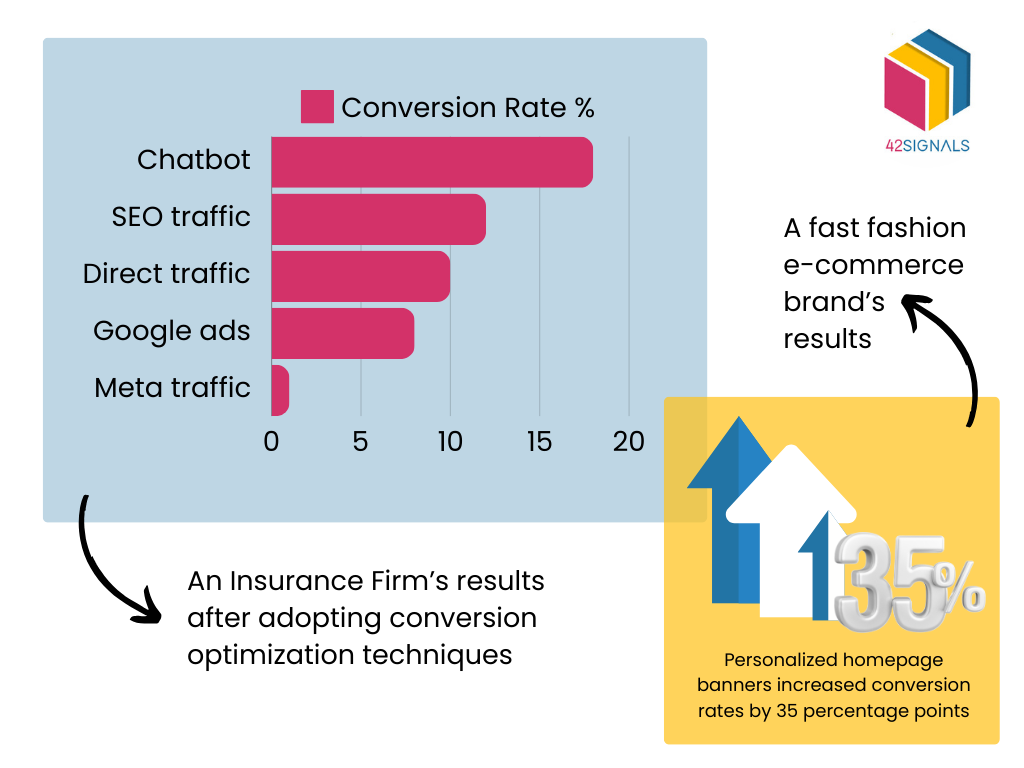
Ultimately, while ad-level optimization on platforms like Google and Meta is common, true conversion success hinges on the overall user experience. Over-focusing on ad optimization without improving the website experience or retention strategies can severely limit efficiency.
